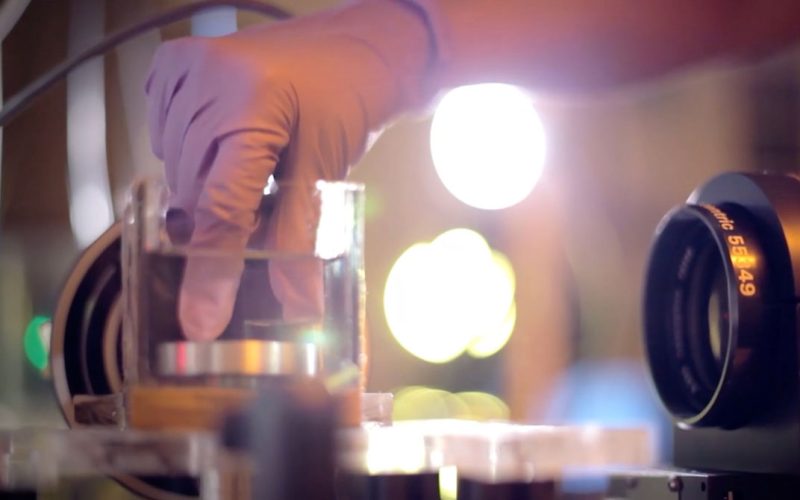The intersection of medicine and physics evokes a vivid tapestry woven with threads of inquiry, innovation, and introspection. Within the medical field, students often gravitate towards disciplines that promise an immediate impact on human health. Surprisingly, the path less traveled—the study of physics—holds unique allure for aspiring medical professionals. This exploration seeks to illuminate whether it is truly unusual for a medical student to have delved into the principles of physics, examining the rich fabric of knowledge that unites these seemingly disparate realms.
To commence this discussion, it is imperative to consider the inherent nature of both disciplines. Medicine is often perceived as a domain of compassionate care, empirical evidence, and patient interaction. Physics, on the other hand, encounters the abstract and quantifiable universe, forming the bedrock of many scientific advancements. The juxtaposition of these fields conjures a striking metaphor: while medicine functions as the art of healing, physics serves as the science of understanding the mechanisms that govern both the cosmos and the microcosm of the human body.
The journey from physics to medicine can be likened to a transformative alchemy—where the student of one discipline transmutes theoretical knowledge into practical applications that enhance human well-being. In fact, a significant number of students explore this intriguing duality through specialized programs, medical physics training, or even combined degree pathways. Having a background in physics may seem atypical for a medical student, yet it embodies a rich reservoir of analytical and critical thinking skills that are profoundly beneficial in clinical practice.
Physics cultivates an acumen for rigorous analysis and precision—qualities that are invaluable in medical diagnostics. The medical profession requires the synthesis of vast amounts of data, and an understanding of physical principles can sharpen the medical student’s ability to interpret complex imaging modalities such as MRI and CT scans. The meticulous nature of physics education equips students to dissect intricate problems, much as a physicist might deconstruct a quantum enigma in pursuit of clarity.
Furthermore, the embrace of physics enhances a medical student’s understanding of the human body’s interaction with technology. Consider the marvel of medical devices such as pacemakers, radiation therapy equipment, and diagnostic imaging tools. Each instrument encapsulates the principles of physics, necessitating a comprehension of not only biology but also the operational dynamics of the technology at hand. A medical student well-versed in physics is thus situated at the nexus of innovation, possessing the competence to contribute meaningfully to the advancement of medical technology.
The conversational bridge between these disciplines becomes even more compelling when contemplating how principles of physics underscore essential biological processes. For instance, the laws governing fluid dynamics illuminate our understanding of blood circulation, while thermodynamics provides insights into metabolic processes. In this light, the inquiry shifts to whether medical students with a foundation in physics possess an enhanced capacity to innovate within these biological parameters, owing to their comprehension of the systemic behaviors at play.
While it is relatively uncommon for medical students to have pursued physics as a significant aspect of their academic journey, this rare background often manifests as a distinct advantage. This conundrum invites an exploration of educational paradigms and societal expectations. The curricula of many medical schools are meticulously curated to prioritize subjects that directly influence patient care, leaving little room for the interdisciplinary meld that physics embodies. Consequently, medical students who venture into this realm may find themselves innovators advocating for broader integration of scientific disciplines into healthcare education.
Moreover, the phenomenon of “outliers” within this context plays a pivotal role in shaping the future of medicine. By embracing the idiosyncratic path of merging physics and medicine, these individuals not only redefine their personal trajectories but also challenge conventional notions about the pathways to healthcare proficiency. They emerge as catalysts for progress, advocating for a more holistic educational framework that recognizes the symbiosis between seemingly distant disciplines.
It is crucial to acknowledge, however, that the journey of a medical student with a physics background is not devoid of challenges. The cognitive dissonance between the theoretical nature of physics and the empathetic, interpersonal elements of medicine can be jarring. Students may navigate the precarious terrain of balancing analytical rigor with the nuanced understanding of human emotions and ethical considerations inherent in medical practice. Yet, this very tension can forge an exceptional resilience, enabling these students to thrive in multifaceted environments.
In conclusion, it is not unconventional for a medical student to have studied physics. While the paths of medicine and physics may appear divergent, their convergence provides fertile ground for innovation and enhanced understanding of the human condition. Medical students who embrace a foundation in physics exemplify the essence of interdisciplinary scholarship, challenging the traditional narratives surrounding medical education. As they harness the insights gained from physics, they stand poised to redefine healthcare’s future, illuminating pathways that transcend conventional boundaries and foster a more integrated approach to human health. Thus, it becomes evident that the unusual amalgamation of physics and medicine is not merely a curiosity, but a profound opportunity that beckons medical students towards a more expansive horizon of understanding and practice.












